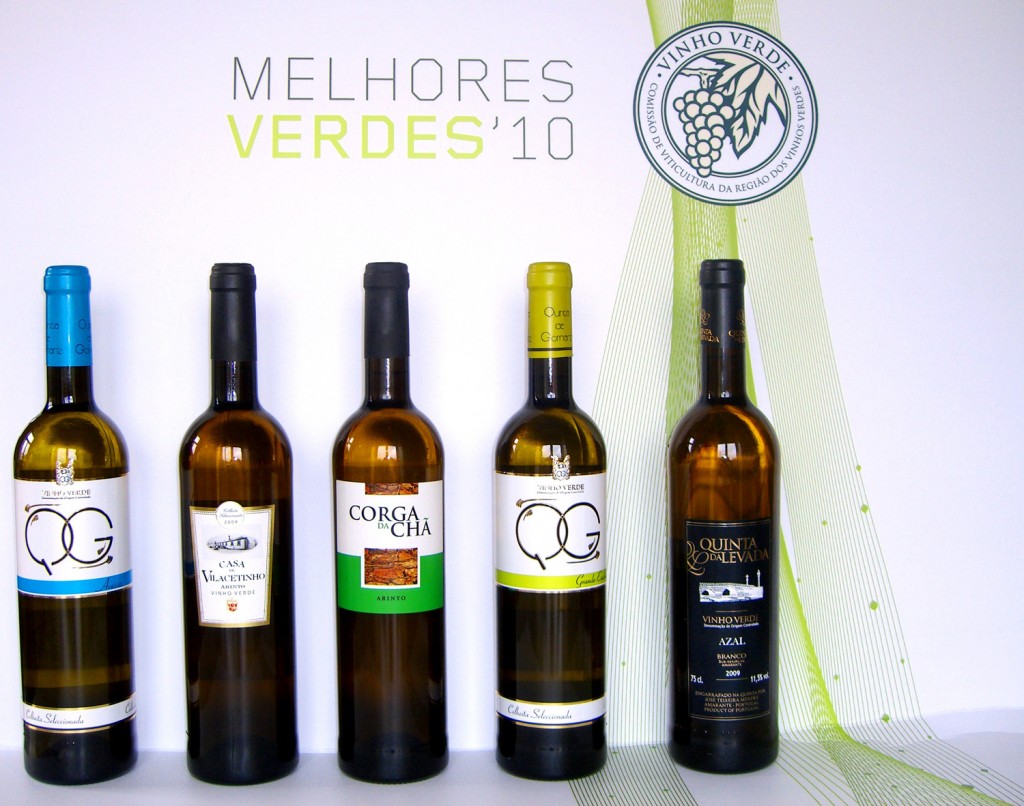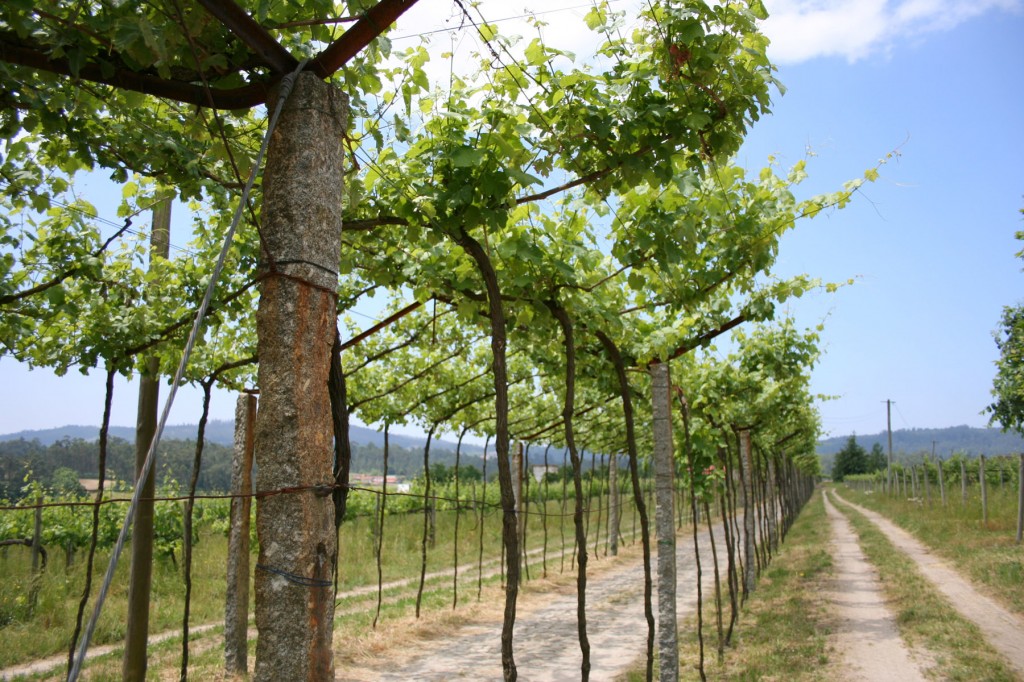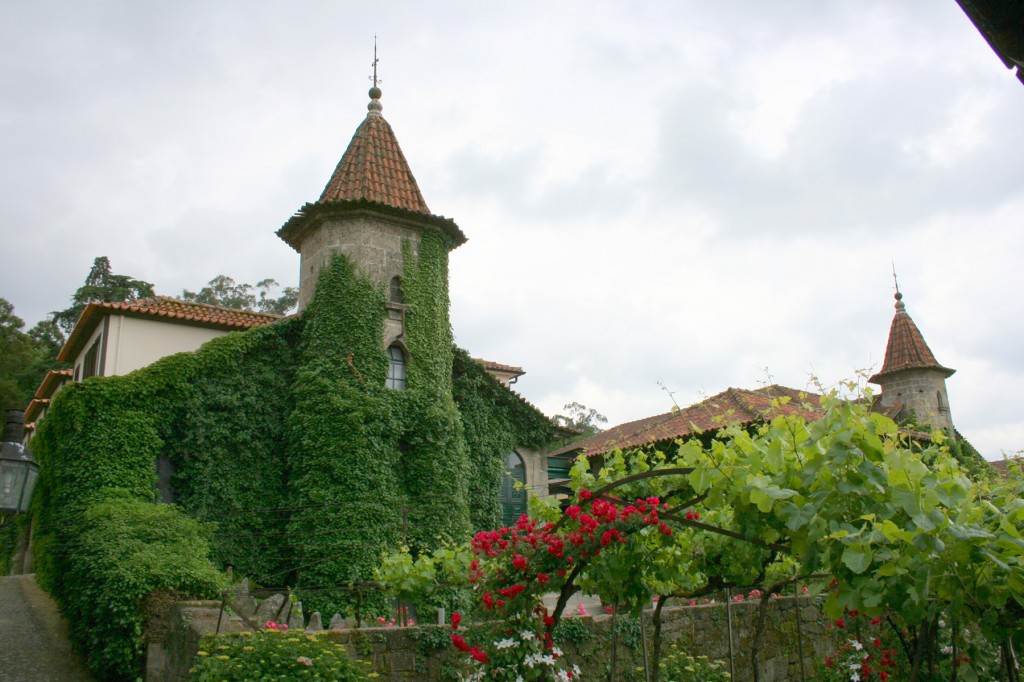The irony of Portugal is that, though wine has been made here for centuries, most wine drinkers cannot name a single grape from the region, with the possible exception of port, and that’s not a grape. But Portugal has varied wine regions and among white wines, it’s broadly known as the Vinho Verde region. I went to Portugal in May of 2010 to explore the wines and to be the only U.S judge on a six-member international panel to award the Best of Vinho Verde Awards. A group of Portuguese judges pre-rated about 300 wines prior to our arrival, therefore when the international judges showed up (from the U.S., Canada, Brazil, England, Germany and Norway) we were confronted with the top 30 wines, which we eventually awarded the best five. Interestingly, the palettes of the Portuguese and the international judges were remarkably similar, and in light of some discussion about wine judges’ having “regional” palettes. We were surprised to see that the bottom line is that a good wine is a good wine and judges from diverse backgrounds can easily determine that.
Prior to the awards ceremony I spent four days meeting 16 different producers and tasted through 150 wines. What is loosely termed Vinho Verde (literally “green wine”) constitutes the main white and some red wines of Northern Portugal. The name suggests green, but in reality it means “joven” or young wines; wines meant to be consumed less than a year or two after bottling. The other irony of Portugal is that many of these young wines are better with age, even up to five years. Yes the joven wines are light, bright and crisp with a sharp acidity, but time in bottle allows them some maturity which softens them and drops their acidity. The main white grapes are Alvarinho, Loureiro and their blending partner, Trajadura, as well as Azal, Arinto and Avesso. Though these grapes make simple wines, to make a good wine is not a simple process. “When the fruit is ripe you have to pick fast or the acidity will drop quickly,” says Paulo Rodrigues of Quinta do Regueiro. At Quinta da Aveleda, one of the most beautiful winery’s you’ll see in Portugal, I tasted through experimental bottlings that enologist Jose Domingues poured for me. These were sample wines that included specific blocks that had been irrigated and non irrigated; blocks with nitrogen added to the soil, and a sample without nitrogen; blocks with more canopy management in the form of leaf pruning and a sample without. The goal for this major winery is to continue to find what works best and that means constant research. Sampling these different test bottles, you begin to realize the subtle differences in farming which have a direct effect on what’s in your glass. Producers who are creating the best Vinho Verde’s include Afros, Provam, Quinta do Regueiro, and Quinta de Gomariz, names you need to search for in your local wine shop.
A brief drive through Northern Portugal and you’ll notice that vines are everywhere and it seems like every back, front and side yard has plantings on them. And this is partly true. The wine region covers about 75,000 acres yet there are roughly 30,000 grape growers. Many of the old trellis systems are still in use, arbors and arched systems routinely 10 feet off the ground, as well as more traditional Western vineyards with the ability for machine harvesting. You will see some oak and barrel programs on the young white wines and by and large these do not succeed as the oak seriously mutes the inherent fresh, light quality of the wines.
At Afros, owner Vasco Croft employs biodynamic winemaking to support a small portfolio of wine which has a clarity and depth to them many producers do not achieve. Quinta de Gomariz is probably the best expression of where the wines of Vinho Verde are heading. The demographics of wine drinkers are changing and these wines reflect that with minimal residual sugar, lots of acidity and a slight effervescence, making these wines young, bright, and fresh, easily drinkable. Additionally these wines are inexpensive: 2 to 5 Euros in Portugal, making them between $10 and $15 in the U.S. They are strongly recommended and you’ll be immensely pleased with the quality in your glass. Back at the awards ceremony where 400 people gathered, the top five Best of Vinho Verde awards selected by the international panel for 2010 were: Casa de Vilacetinho, (Arinto); Corga da Chã, (Arinto); Quinta da Levada, (Azal); Quinta de Gomariz, QG (Avesso); Quinta de Gomariz, QG Branco (Alvarinho and Trajadura). Any of these wines, and many others from Vinho Verde in Portugal are simple delights and worth a sip.
Article and Pictures by Michael Cervin, www.MichaelCervin.com















